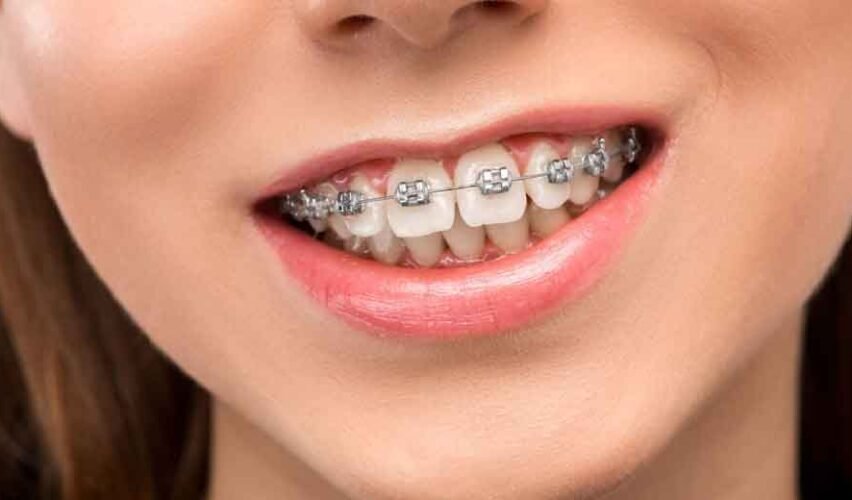What if you could straighten your teeth without wires, brackets, or constant dental appointments? That idea is no longer wishful thinking. It’s exactly why teeth aligners have become one of the most talked-about developments in modern orthodontics. They offer a sleek, flexible alternative to traditional braces and are winning people over for more reasons than just looks.
But how do they actually work? And what’s behind their sudden rise in popularity?
What Are Teeth Aligners?
Straightening teeth aligners are clear, removable trays that fit snugly over your teeth. Each set is custom-made to apply gentle pressure, gradually shifting your teeth into a better position. Unlike fixed braces, aligners are nearly invisible and can be taken out when eating, drinking, brushing, or flossing.
They come in a series. You wear one set for a couple of weeks, then switch to the next. With each change, your teeth move closer to the final desired position. The process can last several months to a few years, depending on the complexity of the case.
The Science Behind the Shift
Orthodontics is based on applying controlled force to teeth over time. This encourages the bone surrounding the teeth to remodel. Aligners do the same thing as traditional braces but without metal wires.
Here’s how it works step by step:
- Planning the Movement
The process starts with a detailed digital scan or impression of your teeth. A specialist maps out every movement needed, right down to the millimetre. - Creating a Series of Aligners
Each aligner is shaped slightly differently to reflect a new position. You wear one set for 1 to 2 weeks, then move to the next. Each new set pushes your teeth a little further. - Controlled Pressure
The plastic material applies gentle, even pressure to targeted teeth. It’s a gradual, guided process. The movements are precise, so only specific teeth shift at a time. - Bone Remodelling
As pressure is applied, the bone around each tooth adjusts. The bone on one side breaks down, while new bone forms on the other. This allows the tooth to shift while staying securely anchored. - Final Retention
Once the teeth are aligned, a retainer is usually worn to keep them in place. Without this, there’s a risk they’ll slowly drift back to where they started.
Why So Many People Are Choosing Aligners
It’s not just about straight teeth. It’s about comfort, lifestyle, and confidence. That’s why aligners are pulling ahead in popularity, especially with adults and older teens.
Here’s why they’ve become the go-to option for many:
- Subtle look– Clear aligners are barely visible, making them a discreet option for those who don’t want a mouth full of metal.
- Removable– You can take them out for meals, events, or photos. That freedom makes them far more adaptable to daily life.
- Fewer appointments– With a set plan and remote monitoring options, you don’t need to visit an orthodontist every few weeks.
- No food restrictions– Since aligners come out during meals, there’s no list of banned foods like there is with braces.
- Comfort– The smooth plastic surface means less irritation to cheeks and gums.
Limitations to Be Aware Of
Even with all their perks, aligners aren’t perfect for every situation. Severe bite issues or complicated tooth rotations might still need traditional orthodontic treatment. Aligners also demand discipline. They need to be worn 20 to 22 hours a day, consistently. If they’re left out too often, they won’t work as intended.
So while the convenience is a major draw, it also means the responsibility lies heavily with the user.
How Long Do Aligners Take?
Treatment time can vary quite a bit. It depends on how complex the alignment is, how consistently the aligners are worn, and how well the teeth respond to the movement. On average, most treatments take between 6 months and 2 years. Minor shifts can be completed in less time, while more complex corrections will naturally take longer.
The process may feel slow, but the gradual nature is key to keeping teeth healthy during the transition.
Are They Safe and Effective?
Aligners are widely recognised as safe when prescribed and supervised by a qualified dental professional. They are backed by extensive research in orthodontics and are used globally to treat a range of alignment issues, from minor spacing to moderate crowding and bite adjustments.
Effectiveness also depends on proper use. Not wearing them long enough each day, skipping aligners, or failing to follow instructions can lead to poor results. But when used correctly, they’re a proven method of achieving a straighter smile.
Who Are They Best For?
Aligners are most effective for:
- Mild to moderate crowding– Gaps or slightly overlapping teeth.
- Relapse cases– If teeth have shifted after previous orthodontic work.
- Spacing issues– Minor gaps between teeth.
- Cosmetic improvements– People who want a subtle upgrade without braces.
They may not be the right choice for:
- Complex bite problems– Overbites, underbites, or crossbites requiring jaw correction.
- Severe crowding– When teeth need significant movement.
- People who may not wear them enough– Consistency is critical.
What to Expect Day-to-Day
There is a short adjustment period. For the first few days with each new set, some tightness and pressure are normal. That’s the sign they’re working. Speaking may feel a bit strange at first, and it’s common to experience a slight lisp, but this usually fades quickly.
Daily care is simple. Rinse the aligners before putting them back in, clean them regularly, and avoid drinking anything other than water while wearing them. Staining or warping can happen if exposed to heat or coloured drinks.
Straight Teeth, Without the Fuss
Aligners have reshaped what people expect from orthodontics. They’ve made the process more private, more flexible, and in many cases, more comfortable. It’s not just about the aesthetics of a straighter smile, though that’s definitely part of the appeal. It’s also about the control and freedom aligners give, allowing people to work towards better dental alignment without interrupting their daily lives.
They won’t be right for everyone, but for many, they offer the ideal mix of science, simplicity, and subtlety.
Where Things Are Headed
The demand for clear aligners continues to grow, and innovation in this space is moving quickly. Digital scanning, 3D printing, and remote tracking are making treatment faster, more accurate, and more accessible.
For now, the popularity of aligners comes down to one thing: they fit how people live today. Quietly working in the background, with minimal disruption and maximum impact.



